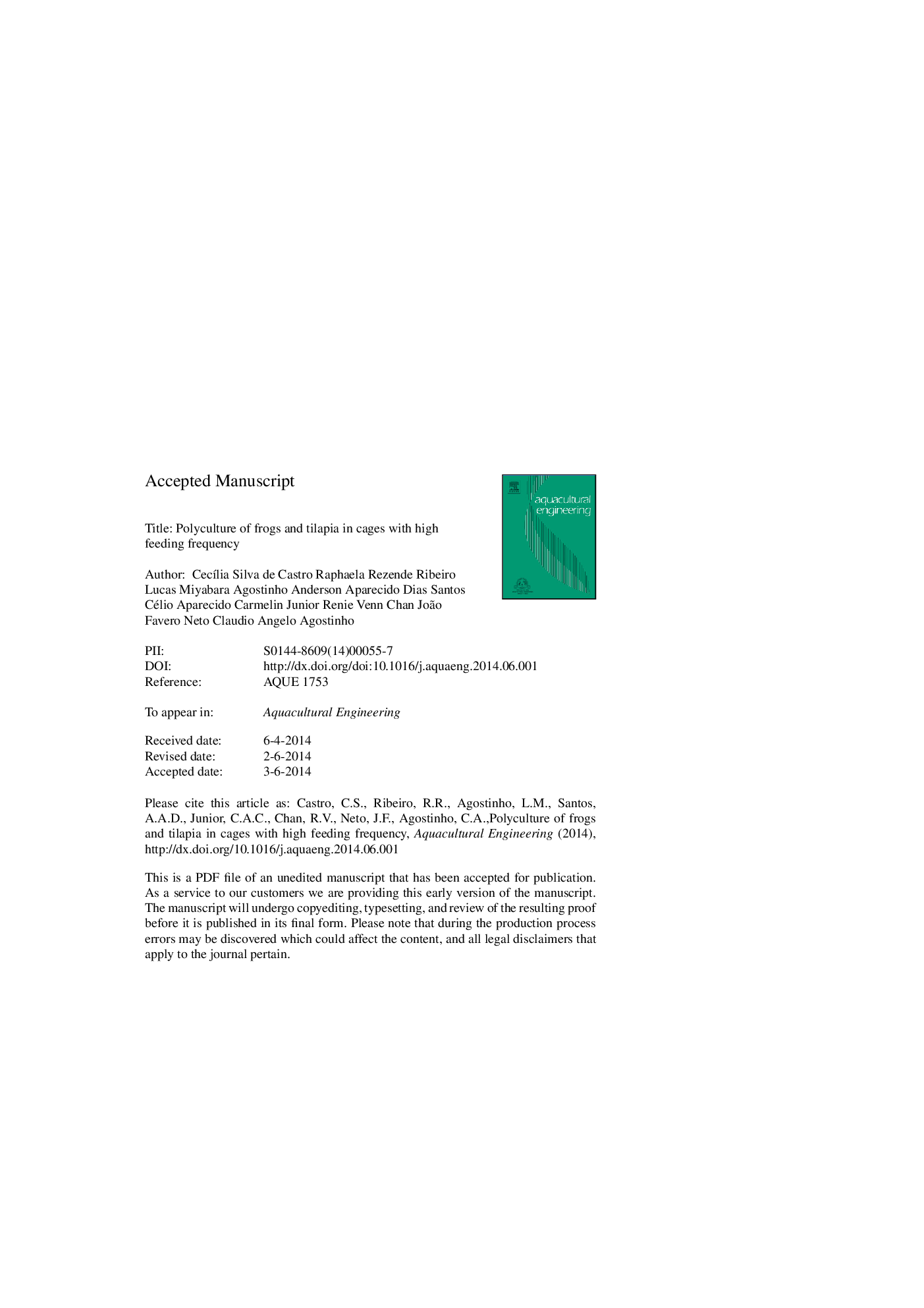| Article ID | Journal | Published Year | Pages | File Type |
|---|---|---|---|---|
| 6381282 | Aquacultural Engineering | 2014 | 27 Pages |
Abstract
The polyculture of frogs and tilapia was evaluated in 12 pens made of polypropylene, installed within cages linearly distributed in a pond. 43 bullfrogs (Lithobates catesbeianus) with 79.1 ± 16.9 g were distributed in each pen; and 30 tilapia fry (Oreochromis niloticus) with 17.0 ± 1.0 g were distributed in each cage. Three feeding frequencies were tested (24, 48 and 96 meals/day) and the feed was supplied by automatic feeders. Tilapia were fed only with the leftovers because the feed was supplied just to the frogs. At the end of the experiment (120 days), the average values of the apparent feed conversion ratio (FCR) of the frogs were 2.46, 2.43 and 2.11 for the feeding frequencies of 24, 48 and 96 meals/day, respectively; regarding the polyculture, frogs and tilapia together, these values were 1.55, 1.52 and 1.33 for the same frequencies, respectively. The results indicated that the use of high feeding frequency (96 meals/day) improved FCR of frogs' production with consequent reduction of feed waste. The polyculture showed that it is possible to produce frogs in cages sustainably.
Related Topics
Life Sciences
Agricultural and Biological Sciences
Aquatic Science
Authors
CecÃlia Silva de Castro, Raphaela Rezende Ribeiro, Lucas Miyabara Agostinho, Anderson Aparecido Dias Santos, Célio Aparecido Jr., Renie Venn Chan, João Favero Neto, Claudio Angelo Agostinho,
